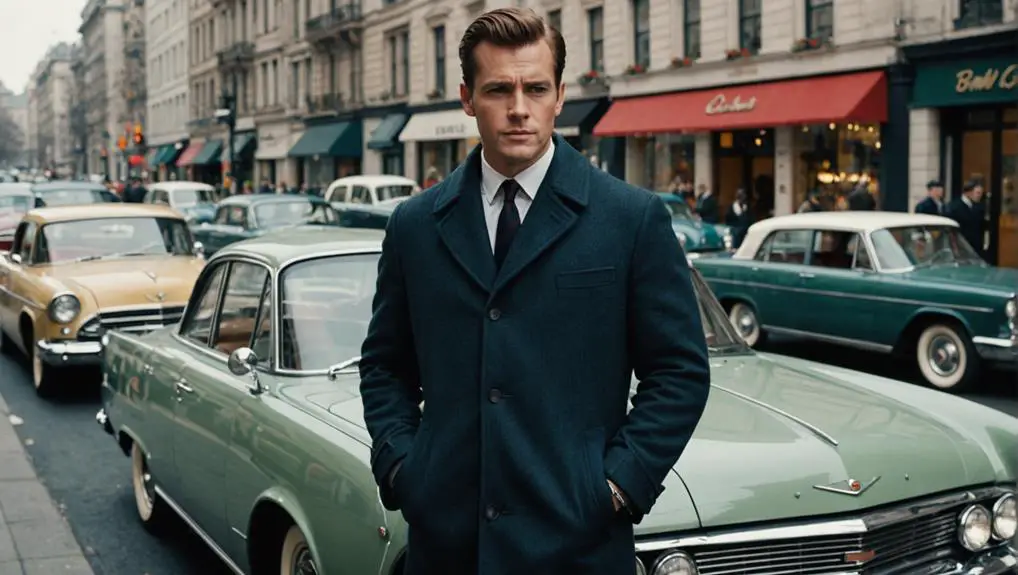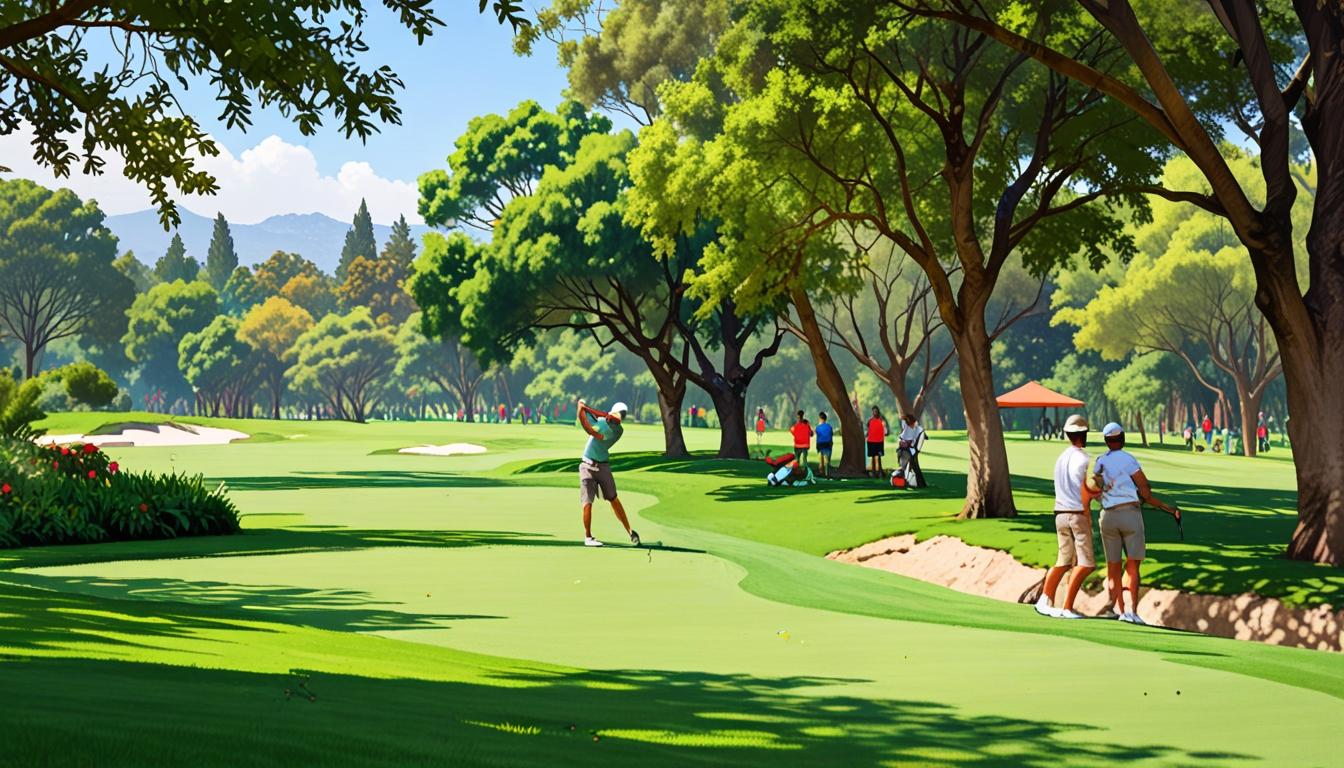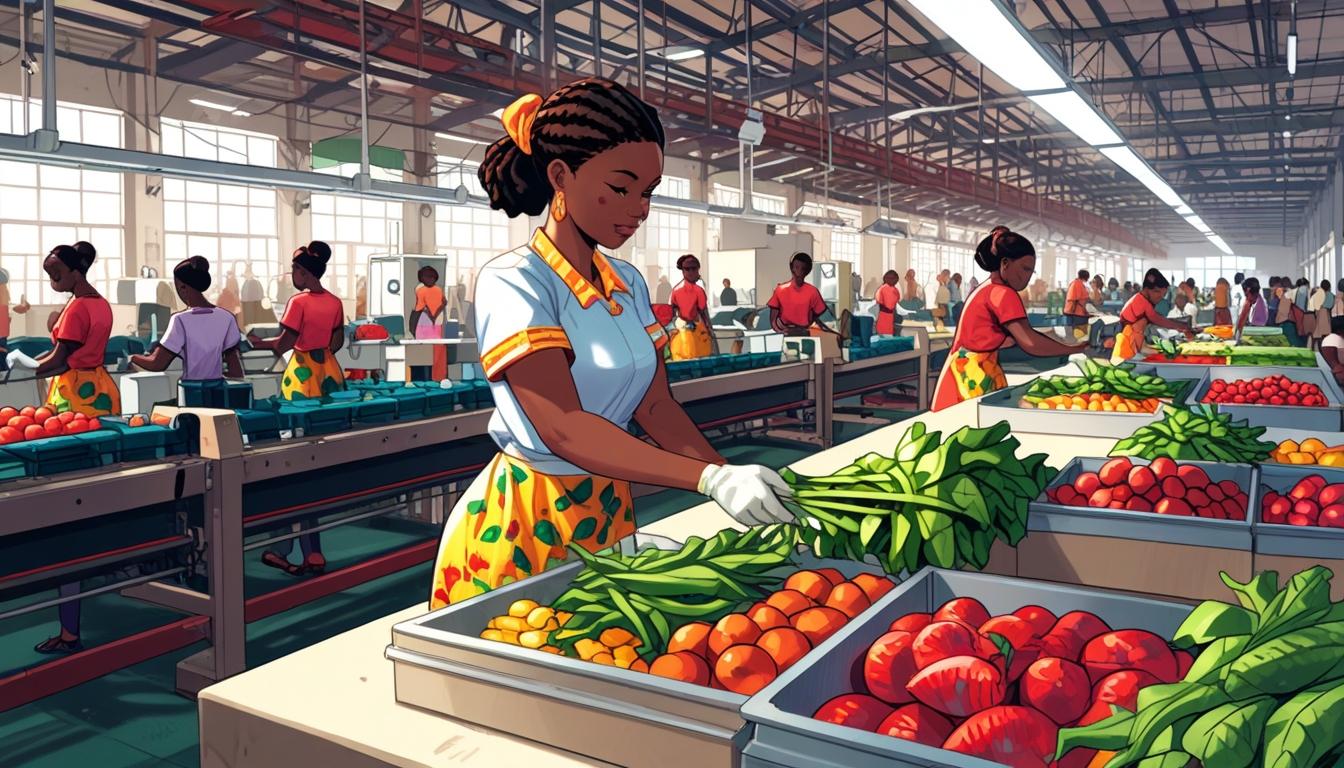Men's overcoats in the 1960s captured a unique blend of elegance and bold expression. You'd notice a variety of styles, from classic trench coats to mod overcoats, often featuring daring patterns and rich colors like olive green and charcoal. Fabrics ranged from warm wool to luxurious cashmere, emphasizing tailored fits that defined the era's aesthetic. Iconic designers like Pierre Cardin introduced modern cuts that still resonate today. These versatile pieces suited various occasions, enhancing personal style and cultural identity. If you're curious about how to incorporate these vintage pieces into your wardrobe, there's much more to explore.
Overview of 1960s Men's Overcoats
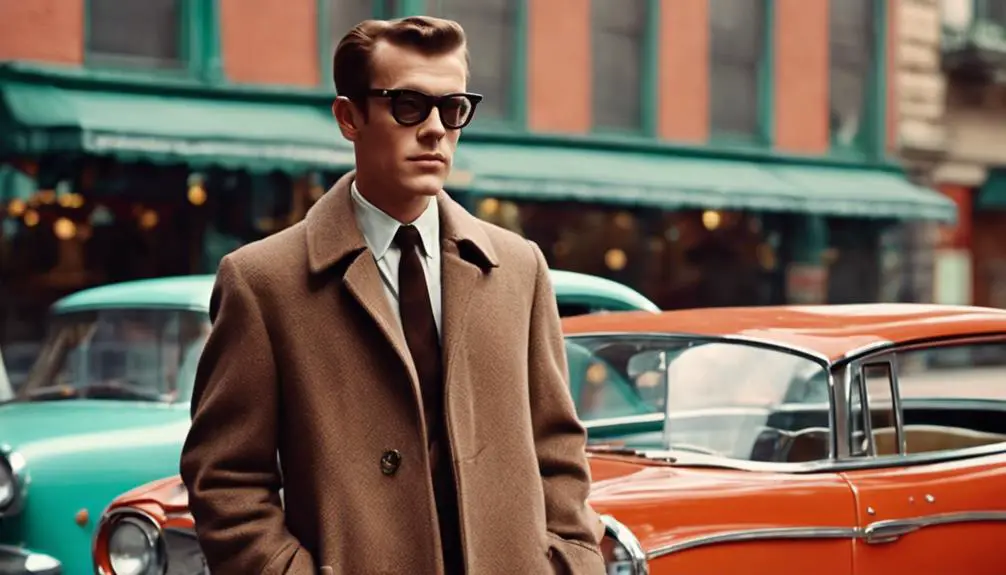
In the vibrant landscape of 1960s fashion, men's overcoats emerged as a key component, showcasing a dynamic interplay of British and American influences. You'd find an impressive variety of styles, from trench coats to mod overcoats, reflecting the era's diverse aesthetic. Fabrics like wool, gabardine, and polyester blends dominated, with tailored fits emphasizing unique textures and quality craftsmanship.
The lengths of these overcoats ranged from above knee to below knee, catering to both formal occasions and casual outings. This versatility made them essential pieces in any man's wardrobe. Among the standout features were double-breasted closures and wide lapels, which not only enhanced their tailored appearance but also added a touch of sophistication. Bold colors such as olive green and charcoal became particularly fashionable, allowing you to make a statement while staying warm.
Size availability was commendably diverse, accommodating body types from Extra Small to 2XL, ensuring you could find the right fit. With the combination of stylish design elements and practical considerations, the 1960s men's overcoat truly represented a golden age for mens vintage fashion.
Popular Styles and Trends
The 1960s brought forth a rich assortment of popular styles and trends in men's overcoats that defined the decade's fashion narrative. Knee-length overcoats emerged as a staple, seamlessly blending style with functionality. These coats became essential for those embracing the era's dynamic spirit. Among the favored styles, trench coats and Mens Mod overcoats stood out, often showcasing bold colors and unique patterns that appealed to fashion-forward individuals enthusiastic to make a statement.
Wool jackets played a significant role during this time, particularly those with tailored fits and textured fabrics. You'd often see them worn in both casual and formal settings, reflecting the versatile nature of 1960s menswear. The period also emphasized luxury and craftsmanship, with high-quality materials like cashmere and gabardine becoming popular choices. This focus on quality not only elevated the aesthetic but also guaranteed durability.
Iconic vintage 1960s mens designs, such as double-breasted overcoats, continue to influence contemporary fashion trends. Their timeless appeal demonstrates how the bold styles of the 1960s remain relevant, reminding us of the rich heritage of men's outerwear.
Fabric and Material Choices
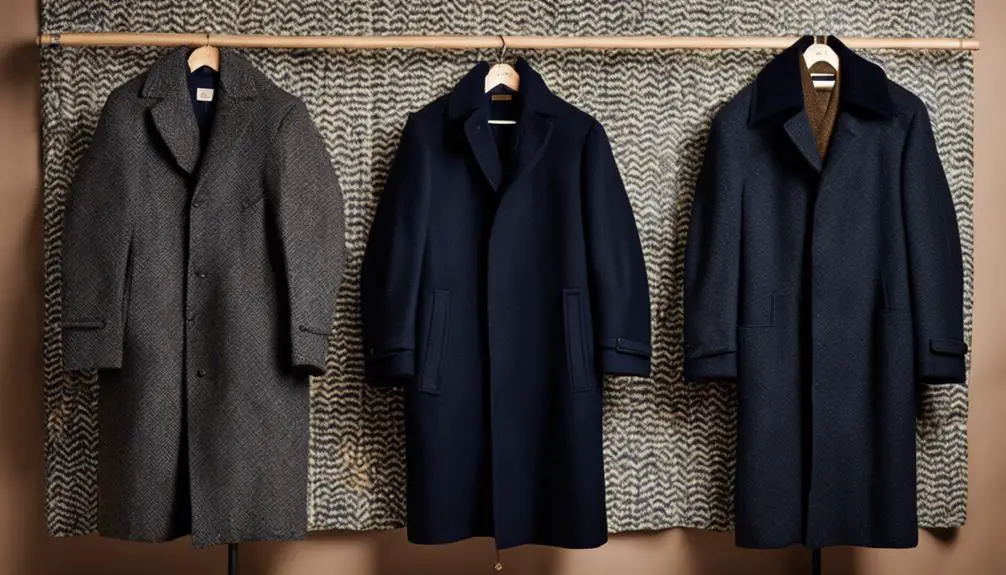
During the 1960s, the fabric and material choices for men's overcoats played a crucial role in shaping both style and functionality. Wool was a staple, renowned for its warmth and durability, making it an ideal choice for colder months. Its natural fibers provided a classic elegance that many men sought in their outerwear. Cashmere, on the other hand, offered a luxurious alternative with its super soft texture, appealing to those looking for comfort without compromising style. While wool dominated the market, cashmere options often came with a higher price tag, reflecting their premium quality.
As the decade progressed, synthetic blends like polyester cotton gained popularity, providing lightweight, easy-care options that catered to evolving lifestyles. These materials allowed for more versatile designs while maintaining some of the warmth associated with traditional fabrics. Dark colors such as black, charcoal, and olive green became prevalent, aligning with the fashion trends of the era and enhancing the overall sophistication of overcoats. Ultimately, your choice of fabric not only influenced the aesthetic but also impacted the practicality and price of overcoats during this dynamic decade.
Notable Designers and Brands
A vibrant array of designers and brands emerged in the 1960s, reshaping the landscape of men's overcoats with their innovative visions. Visionaries like Pierre Cardin and André Courrèges were at the forefront, celebrated for their distinctive cuts and modern fabric choices. Their designs not only challenged traditional tailoring but also introduced a sense of futurism to the overcoat, making it a staple for stylish Jacket Men. The era's unique characteristics can be seen in the vintage clothing trends by era that reflect the evolving styles and preferences of the time. Brands such as London Fog and Alligator gained traction, blending practicality with high fashion. Their overcoats, often crafted from luxurious wool and cashmere, catered to men who sought both warmth and elegance. The decade also witnessed the influence of mod fashion, spearheaded by designers like Mary Quant, who encouraged bolder colors and double-breasted styles.
The rise of the leather jacket also marked this era, providing a more rebellious alternative to classic wool overcoats. With the cultural shifts of the 1960s, the overcoat evolved into a symbol of self-expression, reflecting the vibrant spirit of the times. As you explore this decade, it's clear that the contributions of these designers and brands left an indelible mark on men's fashion.
Care and Maintenance Tips
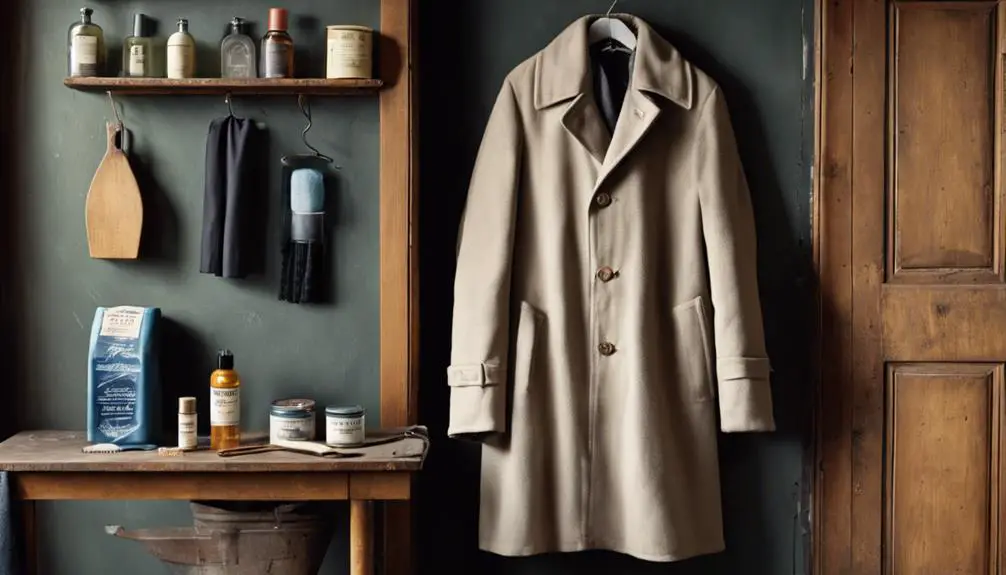
Maintaining the pristine condition of your 1960s men's overcoat requires attentive care and regular upkeep. Start by cleaning your vintage overcoat according to its fabric type; for instance, wool typically benefits from dry cleaning, while cotton blends can be machine washed on a gentle cycle. This tailored approach to care guarantees your coat retains its original charm and durability.
When storing your overcoat, place it in a cool, dry area and use breathable garment bags to shield it from dust and moisture, which can lead to mold and mildew. Regularly use a soft brush to gently remove dirt and lint, especially from wool and cashmere blends, to preserve their texture and appearance.
Be mindful of sunlight exposure; avoid leaving your overcoat in direct sunlight for prolonged periods, as this can fade colors and compromise fabric integrity. Finally, promptly repair any minor damages, like loose buttons or seams, to prevent further deterioration. By following these care and maintenance tips, you'll not only protect your investment but also maintain the timeless elegance of your 1960s overcoat.
How to Style Overcoats
Styling a 1960s overcoat can elevate your wardrobe, offering both sophistication and a nod to vintage fashion trends. The right combination of pieces can create a timeless look that blends seamlessly with modern sensibilities.
Here are some ways to style your overcoat:
- Classic trench coat: Pair it with tailored trousers and a button-down shirt for a polished, sophisticated look.
- Wool overcoat: Layer it over a fitted turtleneck and jeans for a chic yet casual ensemble that merges comfort with vintage elegance.
- Accessorize wisely: Add a patterned scarf and leather gloves to infuse 1960s flair and warmth into your outfit.
- Color choices: Opt for neutral or bold colors; dark green or charcoal wool were popular during the era and can make a statement.
- Length considerations: Choose knee-length overcoats for versatility, allowing you to shift between formal and casual settings effortlessly.
Vintage Vs. Modern Interpretations
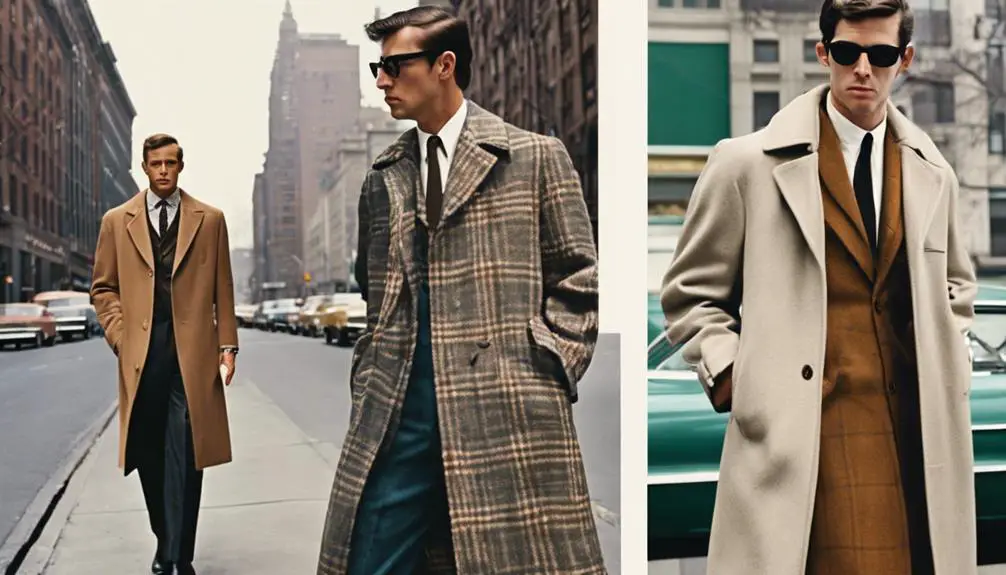
The fascinating evolution of men's overcoats from the 1960s to today showcases a striking contrast between vintage craftsmanship and modern convenience. Vintage overcoats, characterized by trench and mod styles, exude unique charm through their wool and cashmere fabrics, embodying the era's fashion trends. You'll notice that these pieces often feature tailored fits and specific chest measurements, reflecting the meticulous attention to detail in their design. Understanding the significance of vintage tag identification can enhance your appreciation for these garments' provenance and value.
In contrast, modern interpretations of 1960s overcoats take these classic styles and adapt them for today's fashion landscape. Designers blend vintage aesthetics with contemporary fabrics and cuts, offering a more relaxed fit that aligns with current preferences. While vintage options range from $55 to $250, modern reproductions are often more affordable, making retro styles accessible to a broader audience.
The resurgence of interest in vintage overcoats has prompted many designers to draw inspiration from the bold patterns and structured silhouettes that defined the 1960s. As you explore your wardrobe options, consider how these modern interpretations honor the past while providing comfort and versatility for your lifestyle today.
Where to Find Authentic Pieces
Finding authentic 1960s men's overcoats requires a keen eye and a bit of exploration, but the rewards can be substantial. You'll discover unique pieces that not only elevate your style but also tell a story of an iconic era. Here are some prime places to hunt for these vintage clothing gems:
- Vintage clothing stores: Look for shops specializing in retro fashion, where you'll find trench coats, mod overcoats, and wool jackets.
- Online marketplaces: Websites and auction platforms often list genuine vintage overcoats in sizes ranging from Extra Small to 2XL, catering to all body types.
- Specialty vintage retailers: These shops provide detailed condition ratings like "Good" or "Fair," so you can assess quality before buying.
- Vintage clothing fairs: Attend these events to sift through curated selections and inspect pieces up close.
- Pop-up shops: These temporary stores frequently showcase authentic 1960s overcoats, making it easier to find something special.
With prices typically ranging from $55.00 to $250.00, you're likely to snag an authentic 1960s overcoat while enjoying the thrill of the hunt.
Frequently Asked Questions
When Did Men Stop Wearing Overcoats?
You'll notice men began to wear overcoats less frequently in the late 1970s. As fashion evolved towards casual styles and practical outerwear, traditional overcoats became less suitable for everyday wear, marking a significant shift in men's fashion.
What Did Men Typically Wear in the 1960s?
In the 1960s, you'd typically wear tailored suits, vibrant shirts, and eye-catching accessories. Styles like slim trousers and bold patterns dominated, reflecting the era's youthful exuberance and a departure from traditional, conservative fashion norms.
Why Don't Men Wear Overcoats Anymore?
You don't see men wearing overcoats much anymore because casual styles dominate fashion. Comfort and function have taken precedence, and modern fabrics offer lighter, versatile options that suit today's relaxed lifestyle better than traditional overcoats.
What Were Popular Accessories for Men in the 1960s?
In the 1960s, you'd see men sporting skinny ties, fedora hats, and leather gloves. Bold scarves added flair, while briefcases and messenger bags emphasized professionalism, reflecting the era's evolving fashion and social norms.
